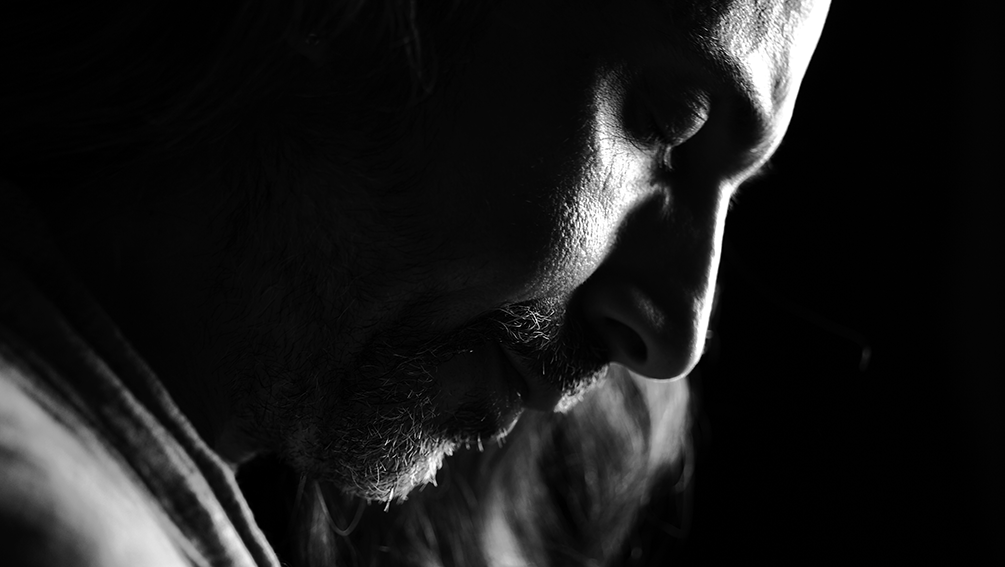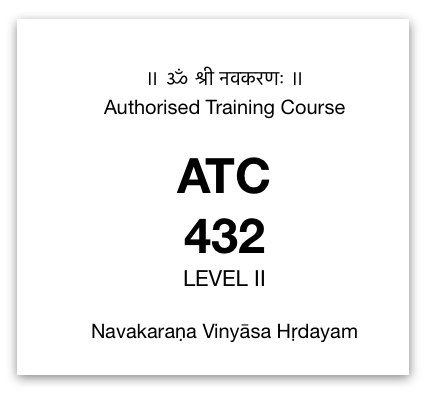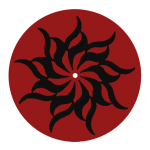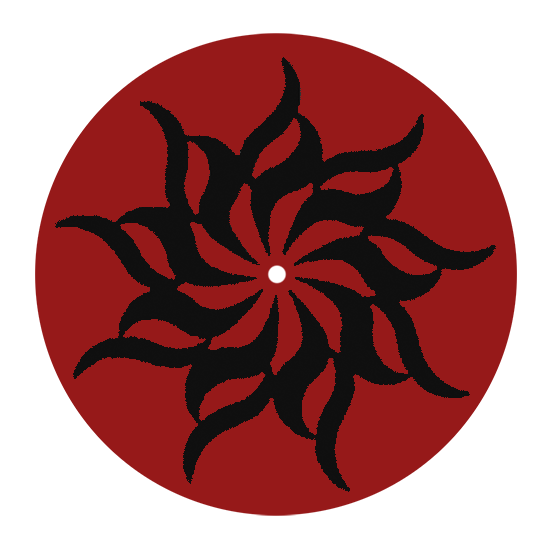Navakaraṇa Vinyāsa Hṛdayam
Monastic Teacher Training Programme
with Dario Calvaruso
Course Description
You may also be interested in:
Monastic Teacher Training
Exclusive porogramme including food and accommodation

An exclusive and unique Teacher Training Monastic Programme fully immersed in the spirit of nature, learning, sharing and self-transformation. This Certified Teacher Training Course is inclusive of food and accommodation in a traditional Buddhist Monastery located in the mountains of Jiangxi province (China). The optimal environment for learning while also retreating yourself.
Dario Calvaruso
Founder and conciever of Navakaraṇa Tantra

Photography: Michael Somoroff
Dario Calvaruso is the conceiver, founder Navakaraṇa Method. He has taught extensively in India, Nepal, China, Hong Kong, Japan, Singapore, Taiwan, Malaysia, South Korea, Mongolia, Indonesia, Middle-east and Europe and United Kingdom. Head of the Navakaraṇa Community, he has trained thousands of Navakaraṇa practitioners and teachers internationally.
Heterogeneous artist since a young age, Dario left Italy and his family when he was 21 on a journey of self-discovery and study of Yoga and Āyurveda to India, which lasted over 15 years. His first destination was Kāśi – The City Of Light (Benares, India). During this time, he began the study of Āyurveda with his teacher Paṇḍit Har Govind Miśra. On an auspicious day, while having a bath at the Ganges in Benares, Dario met Swami Jñānānanda Bharati, who took him in his āśrama at Gangotri, the source of the Holy River Ganges living with Swamijī in the Himalayas about 4,000 m altitude.
Dario learnt Yoga in the orthodox tradition (guru-śiṣya paraṃparām) a unique experience, especially for a Westerner. As advised by his master, Dario took on a journey throughout the Indian subcontinent. He lived with sufis in Pakistan and later with sadhus in monasteries (āśrama-s) of the śiva-siddhānta tradition in Tamil Nadu. During the years he spent in Tamil Nadu, Dario studied and practised Karaṇas (the Art of Movement) and Bharataṇāṭyam (Indian Classical Dance) with Nāṭyācārya Vṛnda Rāmanan (Trichy). At that time he also studied Yoga Darśana (Yoga philosophy) with Prof. Śrī Rangasvāmi Sourirājan at the Śrīrangam Veda Pāṭha-Śāla (one of the most traditional and highly recognised centre of Vedic Studies). He was initiated and guided in the study of Sanskrit language by Prof. Śrī Rangasvāmi Tirunārāyaṇan (a well-know Indian scholar). In 2007 Dario started his own yoga āśrama at Srirangam (India), a city-temple and small island in the River Kaveri. Besides running the āśrama, Dario completed a period of academic studies on Yoga, Psychology, Counselling and Philosophy. Navakaraṇa Method came about spontaneously from his attempt to systematise different śāṣtra-s (traditional arts and sciences) into one holistic and comprehensive methodology for self-discovery, healing and transformation.
Dario has lived, studied and taught all over Asia. It was in Japan where he met the Fuke Grandmaster Fujiyoshi Etsuzan from whom he inherited and brought into Navakaraṇa the traditional Sui-Zen (traditional sound-meditation). Since 2017 Dario has incorporated zen melodies (shirabe), creating sound-mediation practices. In 2022 Dario established Navakaraṇa Kyorei, a gurukulam and āśrama for self-transformation and organic living in Yakushima, one of the Ōsumi Islands at the south of Japan (a UNESCO World Heritage site and Biosphere Reserve). His project “Navakaraṇa Kyorei” has attracted international attention from movie directors and the medias.
Dario conducts Workshops, Retreats and Teacher Training Courses on Navakaraṇa, Philosophy and Holistic Lifestyle internationally.
Assistant and interpreter

Hongmei Guo
Hongmei is a senior Navakaraṇa alumnus, assistant, translator and live interpreter. She is currently assisting at the courses in Jiangxi monastery (China).
Programme
This is a unique Teacher Training Programme where you can combine learning and becoming a Navakaraṇa Teacher in the most peaceful atmosphere, away from any distraction.
The training is held within the premises of the Monastery fully immersed in the nature. It is the ideal setting to focus completely on the Training Course. The programme is inclusive of meals and accommodation.
Morning session 7:00 – 11:30
7:00 – 8:30 Led-class: series practice
8:30 – 11:30 Workshop: Sequencing / De-construction / Conditioning / Kriyā-śuddhi
Afternoon session 13:00 – 17:30
13:00 – 14:30 Lecture: Methodology / Sanskrit / Exam Papers
14:30 – 16:30 Workshop: Sequencing / De-construction / Teachings skills
16:30 – 17:30 Workshop: Conditioning / Kriyā-s.
| SCHEDULE | |||
time table | description | TTC hours | remarks | hall |
4:30 Awake | We advise to get up early in the morning in harmony with monastery life and prepare for the day. |
|
– – |
– – |
5:00 – 7:00 Dhyāna | If you wish you can join seated meditation practice with the monks. |
optional |
№ 401 meditation hall | |
7:00 – 11:30 training course | Teacher Training Course morning session starts at 7:00. Trainees should be in class at 6:45. Late students are not allowed in the Training Hall. |
4.5hr
|
mandatory |
№ 301 training hall |
11:30 – 12:00 Medicine in Silence | Vegan lunch is provided at the dining hall at 11:30. The dinning hall close sharp at 12:00. After closing no food is provided. Food is prepared by monks and volunteers. Food is simple, clean and healing. Meals are taken in complete silence. |
1.5 hr break |
– – |
Dining Hall 五覌堂 |
12:30 – 13:00 Free-time
| From 12:30 – 1:00 you have an hour of free time. We advise to avoid day-napping as it is not conducive to health or well-being. You may consider healthy activities like walking in nature around the monastery, making tea and sharing with the community. |
– – |
| |
13:00 – 17:30 Training Course | Teacher Training Course afternoon session starts at 13:00. Trainees should be in class at 12:45. Late students are not allowed in the Training Hall. |
4.5hr
|
mandatory |
№ 301 training hall |
17:30-18:00 Medicine in Silence | Vegan dinner is provided at the dining hall at 17:30. The dinning hall close sharp at 18:00 pm. After closing no food is provided. Food is prepared by monks and volunteers. Food is simple, clean and healing. Meals are taken in complete silence. |
|
– – |
Dining Hall 五覌堂 |
19:00 – 21:00 Dhyāna | If you wish you can join seated meditation practice with the monks. |
|
optional |
№ 401 meditation hall |
| ||||
21:00 – 4:30 silence | We strongly advice to sleep early to restore body and mind. From 9:00 pm to 4:30 you should keep in complete silence. |
|
– – |
– – |
| Morning shower is mandatory for all. | |||
Limited spots available
In order to provide quality and attention to all the participants the maximum number of participants is limited to 25 students.
Post training follow-up
Navakaraṇa is a supporting community. At the conclusion of the training you will be supported and guided. We help graduated students find job opportunities in the most prestigious Yoga studios, carry out workshops and other events internationally. We also provide guidance for opening Navakaraṇa schools and implementation of the syllabus.
Syllabus
Each module consists of 108 hours. During each module participants learn three different series. Each series consists of three sequences.
With the support of teacher and manual you are trained:
- to learn the sequences by memory;
- to have in-depth understanding of the anatomy, kinesiology of each movement and pose;
- to provide clear instructions;
- to spot, adjust and assist students’ movement and poses.
Participants learn three different series per module. At the completion of the fourth module participants have learnt how to practise and teach 12 series. For a more closed look as each series consists of three sequences at the completion of the course dedicated students should have acquired the skills for practising and teaching with in-depth knowledge 36 sequences.
MODULE 1 第一模块 [108 hours 小时] | |||
(multilevel: primary to advanced 适用于不同水平: 初级到高级) | |||
upakrama pre-sequence 热身序列 | trikoṇa upakrama triangle pre-sequence 三角热身 | parigha upakrama gate pre-sequence 门式热身 | ekapādakapota upakrama one-leg pigeon pre-sequence 单腿鸽子热身 |
prāsthānika opening sequence 起始序列 | trikoṇa krama triangle sequence 三角序列 | parigha krama gate sequence 门式序列 | ekapādakapota krama one-leg pigeon sequence 单腿鸽子序列 |
ānuṣaṅgika opening sequence’s concomitant 起始序列的伴随 | – – | – – | – – |
prādhānika main sequence 主体序列 | uṣṭra krama camel sequence 骆驼序列 | suptaikapādahasta krama supine hand-foot sequence 躺抓大脚趾序列 | triaṅgaikapāda krama three-limbs one leg sequence 单腿三肢序列 |
ānuṣaṅgika main sequence’s concomitant 主体序列的伴随 | – – | – – | – – |
saṃprāpti closing sequence 结尾序列 | hala krama plough sequence 犁式序列 | phalaprāpti krama results sequence 收获结果序列 | ekapāda marīci sarvāṅga krama one-leg Maricī sequence 单腿马里奇肩倒立序列 |
MODULE 2 第二模块 [108 hours 小时] | |||
(multilevel: primary to advanced 适用于不同水平: 初级到高级) | |||
upakrama pre-sequence 热身序列 | pārśvottāna upakrama side-intense stretch pre-sequence 侧部强拉热身 | virabhadra upakrama blessed-hero pre-sequence 英雄热身 | laghu upakrama pre-sequence 温和热身 |
prāsthānika opening sequence 起始序列 | pārśvottāna krama side-intense stretch sequence 侧部强拉序列 | virabhadra krama blessed-hero sequence 英雄序列 | laghu krama gentle sequence 温和序列 |
ānuṣaṅgika opening sequence’s concomitant 起始序列的伴随 | – – | daṇḍa krama stick sequence 13’ 直棍序列 | laghukhaṭvikā krama small-couch sequence 21’ 小躺椅序列 |
prādhānika main sequence 主体序列 | kūrma krama tortoise sequence 龟式序列 | ekapādahasta krama one leg-hand sequence 单脚单手序列 | ekapāda marīci krama one-leg Maricī sequence 单腿马里奇序列 |
ānuṣaṅgika main sequence’s concomitant 主体序列的伴随 | – – | – – | – – |
saṃprāpti closing sequence 结尾序列 | sarvāṅga krama all-limbs sequence 全肢序列 | hala krama plough sequence 犁式序列 | ekapādamaricī setubhandha krama one-leg Maricī bridge sequence 单腿马里奇桥式序列 |
MODULE 3 第三模块 [108 hours 小时] | ||||
(multilevel: pre-intermediate to advanced 适用于不同水平: 次中级到高级) | ||||
upakrama pre-sequence 热身序列 | aśva upakrama horse pre-sequence 马式热身 | pārśvakoṇa upakrama side-angle pre-sequence 侧角热身 | trikoṇa upakrama triangle pre-sequence 三角热身 | pāvana upakrama detox pre-sequence 排毒热身 |
prāsthānika opening sequence 起始序列 | aśva krama horse sequence 马式序列 | pārśvakoṇa krama side-angle sequence 侧角序列 | trikoṇa krama triangle sequence 三角序列 | pāvana vinyāsa mala collection of detox composition 排毒组合集锦 |
ānuṣaṅgika opening sequence’s concomitant 起始序列的伴随 | – – | – – | śvāna krama dog sequence 15’ 犬式序列 | kriyāśuddhi krama active purification 积极清洁序列 |
prādhānika main sequence 主体序列 | baddhaikapāda krama fasten one-leg sequence 单腿捆绑序列 | ubhaya pādāṅguṣṭha krama big toes sequence 手抓大脚趾序列 | dhanu krama bow sequence 弓式序列 | choose the main sequence 选择主体序列 ekapāda marīci krama one-leg Maricī sequence 单腿马里奇序列 uṣṭra krama camel sequence 骆驼序列 tryaṅgaikapāda krama three-limbs one leg sequence 单腿三肢序列 |
ānuṣaṅgika main sequence’s concomitant 主体序列的伴随 | – – | – – | – – | |
saṃprāpti closing sequence 结尾序列 | padma sarvānga krama lotus all-limbs sequence 莲花全肢序列 | phalaprāpti krama results sequence 收获结果序列 | hala krama plough sequence 犁式序列 | hala krama plough sequence 犁式序列 |
MODULE 4 第四模块 [108 hours 小时] | |||
(multilevel: intermediate to advanced 适用于不同水平: 中级到高级) | |||
upakrama pre-sequence 热身序列 | virabhadra upakrama blessed-hero pre-sequence 英雄热身 | pārśvottāna upakrama side-intense stretch pre-sequence 侧部强拉热身 | vyāghra upakrama tiger pre-sequence 虎热身 |
prāsthānika opening sequence 起始序列 | virabhadra krama blessed-hero sequence 英雄序列 | pārśvottāna krama side-intense stretch sequence 侧部强拉序列 | vyāghra krama tiger sequence 虎序列 |
ānuṣaṅgika opening sequence’s concomitant 起始序列的伴随 | svastikaikapāda utkaṭa krama one-leg crossed difficult sequence 单腿交叉难度序列 | – – | – – |
prādhānika main sequence 主体序列 | padma krama lotus sequence 莲花序列 | hanumān krama Hanumān sequence 哈努曼序列 | nāva krama boat sequence 船式序列 |
ānuṣaṅgika main sequence’s concomitant 主体序列的伴随 | – – | samakona krama flat-angle sequence 平角序列 | tripadikā krama tripod sequence 三点头的体势序列 |
saṃprāpti closing sequence 结尾序列 | padma sarvānga krama lotus all-limbs sequence 莲花全肢序列 | sarvāṅga krama all-limbs sequence 全肢序列 | hala krama plough sequence 犁式序列 |
Certification
Navakaraṇa is a unique methodology which embodies multidisciplinary knowledge and skills. We are aslo a Registered International Association. Navakaraṇa owns a Registered Trademark and patents ®. We provide an independent and globalised system of Certification for our training. Navakaraṇa Certificate is equivalent to any other type of certificate issue by yoga alliances, federations or institutions. Indeed, only those who are holding Navakaraṇa Certification are authorised to teach Navakaraṇa.
Upon the successful completition of each module you will receive the ATC-108 Certificate. At the successful completition of Navakaraṇa Vinyāsa Hṛdayam you may request for a ATC-432 Certificate.


Schedule
Module 1
check-in: 3rd September, 2023 (afternoon)
training days: 4-9 September, 2023
Rest day: 10th September, 2023
training days: 11-16 September, 2023
check-out 17th September, 2023 (before noon)
Module 2
check-in: 3rd September, 2024 (afternoon)
training days: 4-9 September, 2024
Rest day: 10th September, 2024
training days: 11-16 September, 2024
check-out 17th September, 2024 (before noon)
Location
Buddhist Monastery, Jiangxi, China

The training is conducted in a traditional Buddhist Monastery located at Jiangxi, China. It is a private environment immersed in nature.
International Airport
The nearest airport is Nanchang Changbei International Airport. From there you need to take a transportation to Nanchang train station.
Reaching the venue
Students have to arrange at their own cost the transportation to reach the venue. Venue’s details will be shared with you after registration.
Regulations of the monastery
The programme is hosted in a real temple / monastery where we live and share space, food and time with the monks. .There are therefore monastery rules that we all have to follow:
Instructions for staying in the temple
1. Clothes: pay attention to Buddhist etiquette, and dress neatly and decently. Sensual clothing are not suitable for this envioroment.
2. Food: The temple is pure vegetarian.
(1) Meal time 6:50, 11:20, 17:20 (only)
(2) The restaurant must be kept quiet. The restaurant is a silent hall (no talking / no mobiles) After the meal, everyone has to clean his tableware put back in place.
(3) Students who live in the temple are requested to eat in the temple uniformly. If they go out to eat, they must inform in advance to avoid food waste.
(4) When dining in the monastery, please arrive early and follow the process of picking up and dining in the temple hall.
3. Living: Keep your personal house clean and tidy, keep quiet and avoid affecting others.
Before returning, please take off the sheets and quilts you have used and put them away, so that the temple can be cleaned and tidied up.
4. Walk: There may be snakes in the grass, so don’t step into the grass. Avoid walking on mountain roads at night, and use a flashlight or mobile phone to illuminate the ground when traveling at night.
5. The mountain area is humid, pay attention to moisture-proof, close the windows in time when it rains, and the humidity is heavy at night, it is recommended to draw the curtains in advance.
6. The closing time of the temple at night is 21:00, and the gate of the meditation center in the temple closes at 22:00 at night. Please pay attention to the return time when you go out.
7. Matters needing attention:
(1) Do not talk and laugh loudly in the monastery.
the
(2) Students who live in the Chanyuan should pay special attention: if the railings of the outdoor balcony are damaged, they cannot lean on them.
Add Your Heading Text Here

Tuition
Regular price per module*
HK$ 16,722 per person
Two-module package offer (10% discount)*
HK$ 30,099 per person
* Price is inclusive of
- Teacher Training Tuition);
- Manual,
- Certification
- Follow-up programme;
- Accommodation in twin shared room;
- Two meals per day (chinese vegan monk-cuisine).;
- Use of facilities;
Terms and Conditions
Agreement on terms and conditions
By registering to our programme you confirm to read, understand, acknowledge and agree on the Terms & Conditions.
Frequently asked questions
1. I am mainly interested in improving my practice (rather than teaching). Can I also join this Teacher Training Programme?
Yes, you can and it can be very helpful in improving your practice. The training will cover both practice and teaching skills.
You can decide if your main focus is:
a) improving your practice;
b) improving your teaching skills; or
c) harmoniously balancing the two aspects.
Make sure that you inform the teacher about your main focus before starting the training.
2. Due to some conditions, I can’t practice but I am interested in teaching and improving my teaching skills. Can I focus on hands-on adjustment and other teaching skills during the practice hours?
It might be possible, but you should request a permission from the faculty providing detailed explanation why you can‘t practice.
3. Can I join this Training if I am pregnant or have other health conditions?
You should check with your doctor and follow their advice. If your doctor considers you fit to join the training programme, you can register. In this case you have to inform us at the time of registration.
4. Can I register to a single module?
You can register to a single module. We strongly advise you to register two or four modules to get the maximum from this training and also enjoying the package discount. As we have limited spots available we give priority to the students who signed up for at least two modules. If you have already qualified in Navakaraṇa previous training or if you have any other valid reason to join a singe module please send a enquiry explaining in details why you apply for single module. We will consider your case and get back to you.
5. Can I join Module 3 and 4 if I haven’t joined Module 1 and 2?
Yes you can. Indeed it is advisable to start with Module 1 and proceed in order to Module 2, Module 3 and Module 4.
6. Can I join if I do not speak or understand English?
We provide live interpreter / translator for all training programmes in China, Japan, South Korea, Mongolia and Taiwan. If the training is held in other courtiers from those above mentioned please send your enquiry. We will get back to you.
7. Will I be able to teach and/or practise Navakaraṇa Series after completing the programme?
That is the goal. If you are committed, you should be able to practise and teach the Navakaraṇa Series which you have covered during the programme. If you join all four modules, you should be able to teach and practise 12 series. However, it really depends on your efforts, receptiveness, commitment and experience in practice and teaching. Our faculty and team support you in all aspects in reaching your goals.
8. Will I be able to teach Haṭha, Alignment Class, Core Class, Inversion Class or other types of classes besides vinyāsa style?
Absolutely yes! Navakaraṇa is a method not a style. Navakaraṇa Vinyāsa is comparatively more sophisticated to modern styles. For instance, if you have completed the Navakaraṇa training and you want to teach “Haṭha class” or “Alignment Class”, you will be able to teach it giving the instructions with details based on what you have learnt during the training. In actual fact, you will find teaching any other styles easier.
10. Can I graduate if I miss one session or one day?
No! Students undergoing this programme must be fully committed and understand that 100% full attendance is required. They must also be willing to leave other personal or professional commitments during the duration of the programme. Students can graduate with certification only with 100% attendance.
11. Will I receive a certificate after the programme?
Students who have followed the code of conduct, study diligently and complete successfully the training receive Certificate on the closing day.

